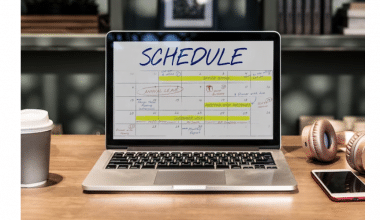As a business owner, keeping a constant flow of cash in the bank is essential. But at some point, your company may need additional funding, either to facilitate a development phase or to maintain current operations. One common strategy is to apply for a business grant, among other things. Here, I’ll walk you through the steps you should take to write a business proposal, whether you’re applying for a grant or just looking for investors in Nigeria. First, let’s define a business proposal.
What is a Business Proposal?
A corporation will create a formal document called a business proposal and present it to a prospect in order to obtain a business agreement.
It’s a prevalent fallacy that business proposals and business plans are the same thing. The proposal assists you in selling your product or service rather than your company itself.
Instead of supporting you in your quest for investors to fund your firm, a proposal assists you in your search for new consumers.
How to Write a Business Proposal In Nigeria
It is critical to study the organization before crafting your business proposal. If they’ve sent you an RFP, make sure you read it thoroughly so you know exactly what they’re looking for. It can also be beneficial to have an initial conversation or meeting with the prospective client to ensure you completely understand the problem they’re attempting to solve and their goals.
After you’ve completed your research, it’s time to start writing your business proposal. There is no one-size-fits-all way to write a business proposal in Nigeria, but let’s look at some common components.
#1. Begin with a title page.
You must provide some fundamental information here. Introduce yourself and your business. Make sure to include:
- Your name
- The name of your business
- The date you submitted the proposal
- The name of the client or individual to whom you are submitting the proposal.
Your title page should balance interaction with professionalism. Because it sets the tone, make sure yours is sleek, aesthetically pleasing, and not too “out there.”
#2. Explain your “why” in an executive summary.
The executive summary explains why you’re delivering the proposal and why your solution is the best for the prospective client.
Specificity is essential in this case. Why are you the best option for them?
Your executive summary, like a value proposition, outlines the benefits of your company’s products or services and how they can solve the problems of your potential clients.
Even if they do not read the entire proposal, the prospect should have a clear sense of how you can help them after reading your executive summary.
#3. Describe the issue or necessity.
This is where you offer a summary of the issue affecting the potential client. This is your chance to demonstrate that you understand their needs and the problem they require assistance with.
Research and critical thinking are essential here. Then take the following steps:
- Examine your client’s individual challenges from all angles.
- Determine the problems that your solution can solve.
- Frame those issues in such a way that your solution stands out as the best option.
#4. Provide a solution.
Lean into specificity and individuality as you present your problem-solving technique.
Ascertain that your offered solution is tailored to the client’s requirements. Find ways to demonstrate that you crafted this proposal exclusively for them.
Make sure to include:
- The deliverables you will provide
- The techniques you’ll employ
- A timetable for your proposed solution
#5. Explain your qualifications.
You know you’re qualified to address this prospect’s problem, but how do they know they can trust you?
Use this portion of your business proposal form to explain why you are the best candidate for the job.
This area should demonstrate your industry authority. Keep the following in mind:
- Case studies
- Client feedback
- Awards that are relevant
- Accreditations in the industry
#6. Include price choices.
Pricing can be tough because you don’t want to under- or over-price your product.
Your proposal’s pricing section could include the following:
- A thorough cost breakdown, including bundles, levels, and add-ons or supplementary services
- How product features and benefits correspond to pricing options
- Pricing for various requirements and budgets
- How your pricing compares to competitors’
- An FAQ section to address any issues and clarify your pricing strategy
#7. End with a summary.
After you’ve shared the preceding information, condense it all into a single piece.
First, summarize the proposal briefly. Include your qualifications and why you’d be the best candidate.
Then, to stimulate further discussion, indicate your availability to go over the next stages.
The purpose of the proposal is to get the client ready to collaborate with you at the conclusion. So, make sure to include your contact information for simple follow-up.
How to Write a Business Proposal for Investors In Nigeria
One of the key goals of businesses seeking capital is to create a compelling investment proposal. This business presentation alone can earn you the financial backing you need to grow. What should be included in an investment proposal is thus an essential fact before you stand in front of investors. Here is a list of steps to take in order to write a compelling business proposal for investors:
#1. Describe your company.
Aside from your firm name on the cover, begin your presentation with a second slide that has a brief overview of your startup. Consider this your executive summary and title it accordingly. This slide should include a few phrases about what you do and the current situation of your firm. Additionally, demonstrate your traction momentarily.
Consider a pitch deck hook that will grab your audience at the beginning of your pitch. A well-thought-out yet straightforward question may help potential investors be drawn to your proposal from the start.
#2. Describe the problem
Next, state the problem you want to solve. And try to do so succinctly. This is usually displayed in a chain. Describe what customers typically require or try to achieve, followed by the pain or barriers they confront in doing so, and how current market solutions fail to fulfill that need and barrier.
As with any problem in a presentation, it should be followed by a solution. Describe your product or service and how your target audience will benefit from it.
If you’re only emailing your deck, make this slide easy to read. You can alter it as much as you want and even have several versions to discuss with people for input before settling on the final version for your company financing proposal.
#4. Demonstrate market research
The following three slides will discuss your market research and how you want to position your offer in a certain niche. You’ll want to demonstrate to potential investors how much valuable expertise you have as a result of your extensive research into the market you’ve selected. What should be included in an investment proposal in this sense is a straightforward demonstration that you are aware of all of the practical measures required to compete successfully in a particular large market.
The first slide in this series should feature your differentiator—state how you differ from other solutions currently available, particularly in terms of distribution. Add to it anything you know about your user acquisition plan. Consider valuable channels for that, previous testing, and any technology on which you’re working.
In general, and for the data in this part, consider predicted production quantities and unit pricing, sales methods, marketing channels, and overall strategies. Show how you know your product can be profitable and how you plan to make it so.
Expand on the size of the market into which you intend to insert in slide number two. Give out clearly visible quantities for your total addressable market and served market, as well as the percentage of market share to which you aspire.
And, for your final slide in this go-to-market portion, graph out your primary focus, priorities, and tasks that result from that. A clear table should help you reach your goal of demonstrating how you’ve evaluated all stages to determine accurate dates for your growth and traction.
#5. Show off your traction
There’s not much to it for traction other than showing it off visually. Make sure this graph is top-notch! Investors are especially interested in traction. A VC’s decision to fund a firm or avoid that early-stage risk might be critical.
#6. Establish your objectives.
It should be obvious how much funding you hope to raise. And how that money will help you achieve your goals. Define how the required investment amount will be spent and what areas will be fostered with it as you distribute it.
Use customer validation to reinforce your argument and communicate your product plan as visually as feasible.
#7. Introduce your team.
Knowing you have the right personnel to tackle this venture is critical for possible investors. They must be able to form an opinion about you, who is behind your organization, and everything you do.
Display your essential team members’ successes at an individual background level as well as as a part of your organization. Investors must have confidence in your ability to capitalize on both problems and opportunities.
#8. If possible, reveal your financial information.
Disclosing your financial information may not be the safest (or even legal) decision in every situation. Consult your legal and financial teams about this. Under the green light, this section should be a lengthy collection of slides. If you go with this approach, make your unit economics available in bullets as well as graphs and tables.
A financial slide is not included in every pitch deck. However, as we’ve shown before, adding one is the first thing investors look for. Your financial estimates reveal a lot about how you think about the company. Financial disclosures also include your anticipated sources of funds, projected gains and losses, loans, and other details. Be as realistic as possible here; it’s the only way to gain much-needed trust in this critical area.
The investment proposal should also include a schedule. This allows investors to see how long you intend to spend on each stage of your project and goals. You should also be very clear about what you want, the technological feasibility, cost breakdown, scalability, and so on. Our investment proposal sample can also assist you with numerous traction and deep dive graphs.
#9. Describe your exit strategy
Explain how your investors will profit from your plan. Now is the time to turn that into a slide. Define whether you are considering an acquisition, selling out to a buyer, or going public, for example. Compare your options as we assist you with our template slides. It can’t hurt to define these in terms of your potential business partners at various stages. You could also consider anticipated timeframes.
#10. Describe how you intend to monetize.
With a clear sales plan, you can complete your monetization slide with as much material as possible. Consider monthly users and your operational margins.
#11. Recognize your challenges and hazards
Recognize the issues you face and the risks they represent for your firm and a potential investor. Accepting these should demonstrate your consideration of your areas for effective competitive strategies. They should not jeopardize your investment proposal.
#12. Emphasize proper timing.
Finally, emphasize what makes your current situation ideal for this funding. Timing is essential in business; it may make or break many aspects of your work. Provide trends, factors, and as much supporting data as possible to demonstrate why now is the ideal time for your organization to take the steps you propose.
How To Write A Business Proposal In Nigeria: Conclusion
Your business proposal features will change depending on the needs of the prospect and the type of business you’re in. Prospective clients should have a few questions about your organization and what it can achieve for them after reading through your plan. With the tips and examples in this article, you have all the tools you need to assist you through the procedure. With a professional, tailored business proposal, you’re likely to impress your client and possibly win their business.
- A BUSINESS PROPOSAL: Meaning, Examples, Template & How to Write It
- HOW TO WRITE A CONTRACT: Simple Steps to Write It
- HOW TO WRITE A BUSINESS LETTER: Examples, a Guide to Writing Proposal, Complaint & Introduction
- HOW TO WRITE A BUSINESS PROPOSAL: Best Format to Use, Examples & Template





